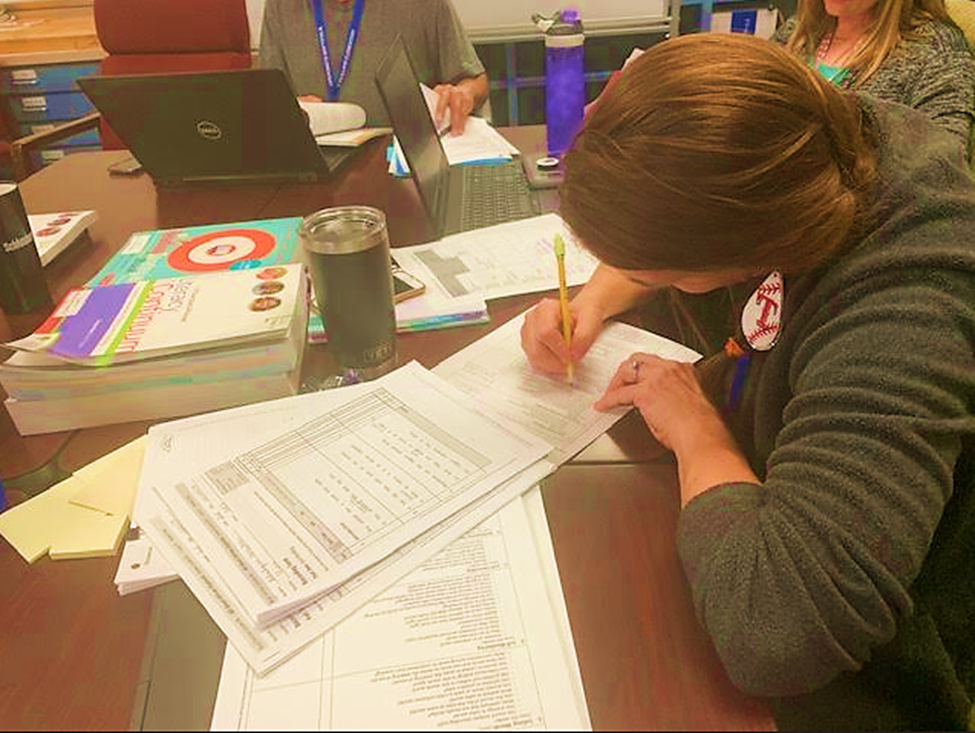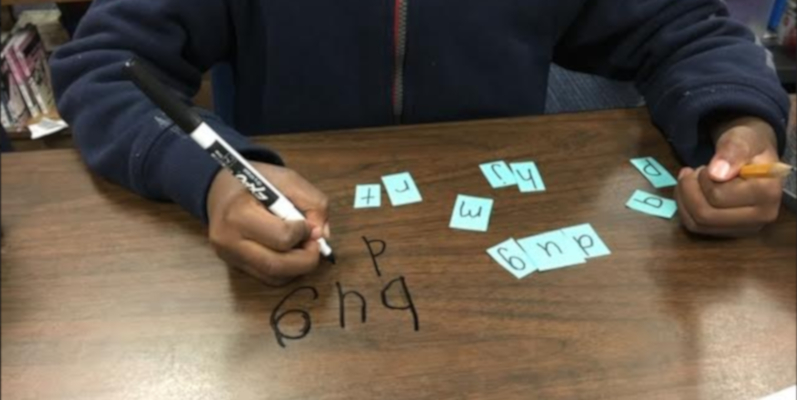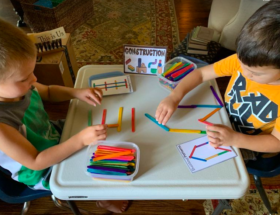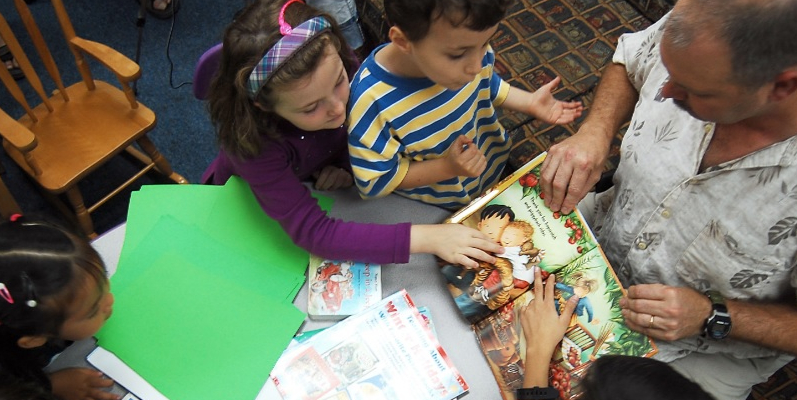When RtI Seems Lacking
We could teach almost every student to read by the end of 1st grade. So why aren’t we doing it?–Dr. Richard Allington
I spend most days now on elementary campuses speaking with grade level teams, coaches and campus administrators about their students who are not reading on grade level. I’ve spent 30+ years in classrooms teaching kids to read or working as a literacy coach with teachers who are working to teach kids to read. Over those three decades, I’ve seen a lot of great reading instruction and a lot of poor reading instruction. My husband likes to say that in my role as an independent literacy consultant I’m well-equipped for these discussions about fragile readers because, “I know a thing or two, because I’ve seen a thing or two.”

Joking aside, there are some things we can do proactively that will dramatically decrease the number of students reading below level by the time they reach third grade.
Start Early
We can know without much effort which students come to us in September of their kindergarten year ill-prepared to read. A simple screener for letter name and sounds would alert teachers as to which students are at risk. Those students should immediately be placed in groups where early literacy skills are not just assessed, but are taught, modeled and time is set aside for students to practice. Kids at risk in kindergarten should receive additional support for phonological awareness, phonemic awareness, phonics, vocabulary and comprehension. That support in these areas should be spread across the day in authentic and natural ways. Rhyming games, letter matches, name activities, phonics instruction should be strategically planned and carried out across read-aloud, shared reading, guided reading and independent literacy work stations. The most strategic framework for building a strong reading identity should start with choice, time and access.
Kindergarten students should be read to, read with and allowed time to choose books they’re interested in so they’ll have books to read during a sustained independent reading time; one that includes reading alone and with a partner. People unaccustomed with early literacy scoff at the idea of kindergarten students reading independently. “They don’t even know how to read yet. How can they be expected to sit alone for an extended amount of time ‘reading’?”
Early literacy skills for our youngest readers include other essential practices in addition to reading words on a page. Before dismissing this very powerful practice for budding readers, I implore cynics to please educate yourself on early literacy.
Can I just say here that teaching kindergarten students to read and providing a loving, enjoyable, developmentally appropriate year of learning for young children are not mutually exclusive? We can teach young children to read AND provide a fun-filled, curiosity-satisfying year of learning. (That’s content for another blog post. Another day.)
Train Well
Early elementary teachers need their districts to invest in systematic, ongoing training for those who teach our youngest students. Dr. Richard Allington makes it clear that our most at-risk students need our most highly qualified educators to teach them how to read.
As much as we love, admire and appreciate our educational assistants, we must assign our most fragile readers to those with the most up-to-date preparation for teaching reading.
Teachers need the highest quality of training in early literacy with an ongoing coaching model that supports, guides, and discusses individual student progress.
Literacy coaches can provide teachers with opportunity to collaborate, plan and assess in order to plan the exact interventions needed to accelerate reading success (while also remediating) for our young readers. A highly qualified teacher, in a few short months, can facilitate “advancement for a reader who needs 10–15 months additional growth to be reading on level with his or her peers”. (Boyd-Zaharias & Pate-Bain, 1998; Gerber, Finn, Achilles, & Boyd-Zaharias, 2001; Rowan & Guthrie, 1989)
Commit to Individualized Targeted Instruction
Intervention programs are a dime a dozen. Proven intervention programs comprise a rather short list. Please check out sites like What Works Clearinghouse and RtINetwork for articles, resources and support to guide your team in choosing appropriate, research-based tools for improving reading instruction.
In the last decade as I’ve worked on campuses, at central administration and as a literacy consultant I’ve also seen the critical need for us to use intervention materials in concert with reliable assessments that provide information for targeted instruction within the intervention session and across the ELA block.
Just this week I met with K-2 teams on a campus where we used a document that coached teachers through a checklist of strategic actions students need in order to read with confidence and competence. The teachers were using running records along with the guide for evaluating student reading behaviors in an effort to design specific goals for individual students within intervention groups.
We followed that work with a discussion on how to instruct and model for those individual goals in an intervention group with varied students’ needs. The solutions had to allow for other instructional settings in order for individual goals to be addressed. Could the teacher also redouble efforts in individual conferring sessions with her readers to support them toward competency? Would some of those “targeted” goals also be appropriate for other students so that shared reading would be the optimal delivery system for specific reading behaviors?

When we begin to think about how instruction for our fragile readers can be delivered in other settings besides just intervention groups, we open the door to systematic reading instruction across the day instead of confining that type of support to just forty-five minutes of the day.
I want to add here that Jennifer Serravallo’s work on setting individual student goals with the student as a part of the decision making process is a powerful tool for teachers. Please revisit the introduction to her book, The Reading Strategies Book: Your Everything Guide to Developing Skilled Readers for Serravallo’s excellent information about why, how and what to do for setting individual goals in supporting readers toward independence. I highly recommend it.
Focus on Authenticity
When teams meet to discuss student support, we should also be talking about the authentic reader tasks that we can and should be supporting on a daily basis. I’m waiting for the day when administrators and coaches also ask teachers how proficient their at-risk readers are at choosing their own books, enjoying what they read from their book boxes, giving book talks, engaging in great discussions in their book clubs, talking about their reading lives outside school, gaining access to books in their home and community.
All these things are critically important to the reading identity of a child and I don’t hear the volume of talk around these things compared to the data talk we engage in as teachers, coaches and campus administrators. Can we change that? Will you join me in those conversations? We must because they count in the reading success of a fragile reader, too.
There is no single intervention kit, box of books, assessments, teacher’s guides that will make a child a proficient reader.
A highly qualified team of educators with a holistic approach to reading, based on research (all the research, not just the bits we prefer) with a commitment to time, choice and access are the best and greatest hope for our most fragile readers.











Yes, Yes, YES!
“Kindergarten students should be read to, read with and allowed time to choose books they’re interested in so they’ll have books to read during a sustained independent reading time; one that includes reading alone and with a partner. ”
And
“There is no single intervention kit, box of books, assessments, teacher’s guides that will make a child a proficient reader.”
There is NO single path to reading success that works for every child. Students who are striving need a caring, educated, committed teacher who will literally move heaven and earth to meet the student’s needs in spite of the resources, assessments, schedules, and the myriad of other obstacles that might ill-advisedly become obstacles.
<3
I agree wholeheartedly! We listen, we observe, we reflect and read and go back again to try to reach the individual reader. That’s teaching. Thanks for the support, reading my blog, having the conversations.